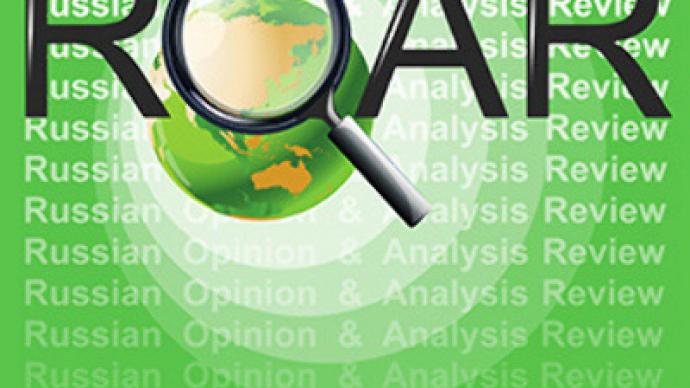ROAR: Radical groups “may repeat civil war scenario in Tajikistan”

The clashes between Islamic groups and the government may lead Tajikistan to a new civil war, analysts warn.
A Defense Ministry convoy came under attack in Kamarob Gorge of the Rasht district on September 19. According to the ministry, 23 servicemen were killed “by foreign mercenaries from Pakistan, Afghanistan and Chechnya.” Other sources say that up to 40 people were killed and dozens were injured in the fight.
Observers say that corruption and poverty may lead the country to instability. “The escape of prisoners, explosion in Khudzhand, the Sunday attack on army soldiers and officers are forming one chain, the roots of which lie in total corruption,” Tajik political analyst Abudgani Mamadazimov told Interfax.
However, he expressed hope that people “still remember all the horrors of civil war and will not agree to repeat it.”
The Tajik authorities have made “numerous strategic mistakes,” the analyst noted, adding that the influence of Islamic groups from neighboring Afghanistan was also an important factor.
Analysts warn of the repetition of a civil war scenario in Tajikistan after fighting broke out. “Former field commanders have stepped up their activities lately,” Nezavisimaya Gazeta daily said.
The authorities accused some of them, including Mullo Abdullo and Ali Bedak, of the attack on the military convoy and the attempt to destabilize the situation, the paper said.
Last week, about 2,000 servicemen were sent to the Rasht district to eliminate Abdullo’s armed group and search for 25 prisoners who escaped on August 23, the paper said. Seven of them had been detained earlier, and the rest hid in Abdullo’s group and planned to cross the border with Afghanistan, it added.
In 1997, after a civil war in Tajikistan, Abdullo joined the Islamic Movement of Uzbekistan, with which he moved to Afghanistan in 2002. “It is not clear where he spent recent years,” Nezavisimaya Gazeta said.
“His return to Tajikistan in May last year immediately provoked increasing tension in the region,” the paper noted. “He started to attract field commanders of the former United Tajik Opposition group and opponents of the present regime of President Imomali Rakhmon.”
As Abdullo’s group was growing, law enforcement agencies conducted an operation in which former Emergency Situations Minister Mirzo Zieev was killed, the paper recalled. In the past, Zieev also was one of the United Tajikistan’s Opposition.
The fact that former militants have stepped up their efforts presents a real threat to Tajikistan’s security, analysts believe. But the possible government’s pressure may also provoke negative reaction as “social and religious tension is already increasing in the republic,” the paper said.
Meanwhile, the Collective Security Treaty Organization (CSTO) has no plans to send peacekeepers to Tajikistan, First Deputy Head of its united headquarters Colonel-General Anatoly Nogovitsin said on Tuesday. The Defense Ministry of Tajikistan had said “they will cope with the task themselves,” Itar-Tass quoted him as saying.
However, the optimal variant for the authorities in Tajikistan would be to ask the CSTO to “send Russia’s and Kazakhstan’s representative of law-enforcement agencies,” believes political analyst Aleksey Vlasov.
Radical Islamic groups and local drug dealers may act together, Vlasov told Gazeta.ru online newspaper. “In any case, Tajikistan is experiencing serious problems now,” he said. “In fact, the scenario of the 1992 civil war is being repeated.”
“It is difficult, of course, to expect revolution now,” the analyst noted. “The level of social protest is weak enough, but a political crisis could not be ruled out.”
The latest events were triggered by the part of the Islamic opposition that is feeling threats “coming from new elements of Tajikistan’s politics,” believes Ajdar Kurtov, editor-in-chief of the Problems of National Strategy magazine.
“These new elements are related to a kind of attack against Islam,” he told Vesti FM radio. “And not only against the Islamic Renaissance Party of Tajikistan, but also Islamic symbols and rites, the policy recently pursued by the government.”
“However, there were reports in Tajik media last week that the leaders of law enforcement bodies would negotiate with representatives of implacable Islamic opposition to reach a kind of agreement,” he noted. “Probably, these talks failed, and the servicemen prepared for action came upon a fierce resistance.”
The latest events in the east of Tajikistan have shown that “in addition to Kyrgyzstan, another weak link exists in the post-Soviet Central Asia – the President Rakhmon regime,” Aleksey Malashenko of the Carnegie Moscow Center said.
Tajikistan is returning to the situation of the beginning of the ’90s, when the Islamic Renaissance Party was the core of united opposition in the country, the analyst wrote in Kommersant daily.
“At stake now is not only President Rakhmon’s authority,” Malashenko said. “The new armed conflict may question the very existence of the Tajik state, threatening it with breakup.”
Sergey Borisov,
Russian Opinion and Analysis Review, RT














